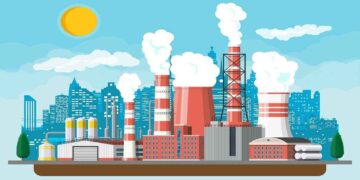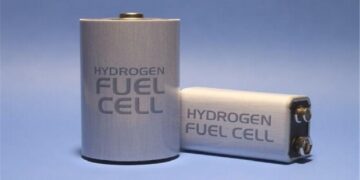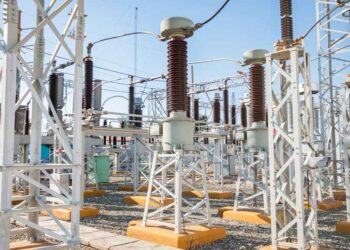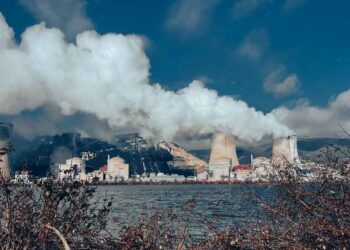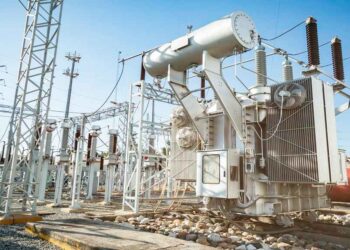Two distinct kinds of the investment: with an eye towards constructing small modular reactors (SMR) and the CANDU (CANada Deuterium Uranium) reactors now in use.
The most recent news about this comes from Jonathan Wilkinson, Canada’s energy minister, who said that the government will be working with French Canadian company AtkinsRéalis to build the updated CANDU design known as the MONARK reactor.
Under this agreement, taxpayers will supply CAD$304 million over four years to fund half of the design overhead for the project.
Globally functioning since 1911, Atkins Réalis is a nuclear and engineering firm. Through linking people, data, and technology, it creates a sustainable future. It provides end-to-end services in engineering, nuclear, and capital project sectors among other important ones. The firm has pioneered CANDU technology and made major contributions to worldwide low-carbon energy solutions over more than ten years.
Ian L. Edwards, CEO of AtkinsRéalis, said, today’s decision by the federal government to invest in the future development of CANDU technology, an upgrade of the proven Darlington reactor type, will enable us to continue this significant work already underway with our utility partners.
He also added, Advancing CANDU technology ensures energy security at this critical time, guarantees economic value for the country and Canadians, improves health outcomes by means of more cancer-fighting isotopes, builds stronger and more resilient relationships with Indigenous peoples, workers and communities, and above all, maintains Canada’s status as a Tier-1 nuclear nation.
CANDU reactors use Saskatchewan sourced uranium
Atomic Energy of Canada Limited (AECL), Canadian suppliers, and reactor operators are working together to modernize a technology that has powered Canada for decades.
Using Saskatchewan’s natural uranium, CANDU reactors do away with the requirement for enriched uranium. While research reactors and medical isotope generation use less than 1 percent of this uranium, nuclear plants eat over 99 percent of it as fuel.
With 7.4 kilotonnes of uranium mined in Saskatchewan in 2022, Canada’s mines will bring in almost CAD$1.1 billion. This production guarantees Canada’s safe energy source and offers CANDU reactors an easily available fuel supply.
Currently running 17 CANDU reactors—16 in Ontario and one in New Brunswick—Canada’s CANDU reactors can assist net-zero integration by helping to reduce over 17 million tonnes of CO₂ emissions yearly by substituting coal.
Minister Wilkinson said, CANDU reactors provide good-paying, long-lasting, sustainable jobs in manufacturing for Canadians, and they maintain an almost entirely Canadian-made, Canadian-designed supply chain through a consortium of Canadian businesses.
The technology has been distributed across other nations. Using CANDU technology are nations including South Korea, China, Argentina, and Romania.
CANDU reactor demand keeps growing. Romania declared intentions to buy two more units for its Cernavoda nuclear plant in late 2024.
With 85% of its components coming from local businesses, the CANDU supply chain promotes economic development. This dependency helps 89,000 highly skilled manufacturing and engineering employment. For Candu Energy Inc., Atkins Réalis engaged more than 750 fresh staff members in 2024 and ordered more than CAD$1 billion from Canadian vendors.
SMRs generate electricity on a smaller scale
Canada is investing in small modular reactors (SMRs) to diversify its nuclear energy options.
SMRs are compact nuclear reactors designed to generate electricity on a smaller scale than traditional reactors. Typically producing between 50 to 300 megawatts, SMRs offer flexible, scalable energy solutions for communities or industries that need reliable power without the extensive infrastructure required by larger plants.
SMRs use nuclear fission to produce heat, which is then used to generate steam that drives turbines to produce electricity. Their modular design allows for factory assembly, reducing construction time and costs. SMRs also offer enhanced safety features, such as passive cooling systems that require no external power source to operate in emergencies.
The Government’s press release also highlighted that Minister Wilkinson announced CAD$55 million in funding from Environment and Climate Change Canada’s Future Electricity Fund (FEF) to support Ontario Power Generation’s Darlington New Nuclear Project.
This project will install three GE Hitachi BWRX-300 SMRs at Darlington, with each unit producing 300 megawatts—enough to power 900,000 homes.
Saskatchewan is advancing its SMR deployment plans. The federal government increased funding for SaskPower’s pre-development work from CAD$24 million to CAD$80 million.
Wilkinson also announced a $52.4 million investment in SMRs and CANDU reactors, including decarbonization strategies in Saskatchewan, Alberta, and Ontario.
The investment allocates CAD$11.4 million from the Enabling SMRs Program for three projects. It also includes $41 million under NRCan’s Electricity Predevelopment Program for four projects.
CANDU project could increase Canada GDP
This investment shows Canada’s will to cooperate with companies, utilities, and system operators in order to grow renewable energy. The government wants to enhance its nuclear program and establish Canada as a top worldwide energy supplier.
Putting money into nuclear power has major financial advantages. A four-reactor CANDU project may boost Canada’s GDP by CAD$50 billion and create CAD$29 billion in tax income, according to the Conference Board of Canada. For about 70 years, construction of these reactors might generate about 20,000 full-time employment and roughly 3,500 permanent jobs.
Canada’s aim of net-zero emissions by 2050 depends on nuclear energy. Zero emissions are produced by CANDU reactors and SMRs unlike those of fossil fuels.
Expanding nuclear capacity will directly improve the environment by means of a clean and dependable power source, replacement of coal and natural gas facilities, and emission reduction guaranteed by a stable electricity supply.
With growing investment and strong government backing, nuclear energy has a bright future in Canada. By 2035 it will be crucial in lowering emissions by 45–50% below 2005 levels.













